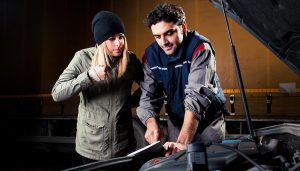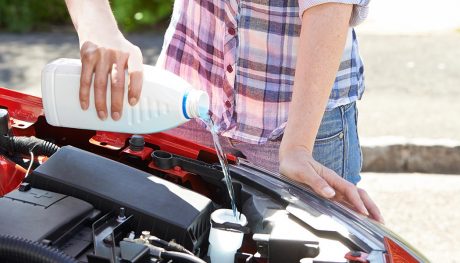6. Stuff in the Engine
With the proper planning, you don’t need the body on the frame to put in your engine. It’s not mandatory that the engine is fully built yet, but it should be mostly complete. There are a few main ideas to this step:
- Weld your engine mounts to the frame in the right places
- Mock up the exhaust and transmission so they’ll fit when you’re done
- It’s easier to work on the drivetrain when the body isn’t in the way. Finding or building a driveshaft, the rear diff and axle, and the exhaust is so much easier when the body is off.
Install your suspension, brakes, hoses, lines – all the little things that are still in boxes on the shelf. The plumbing especially needs to be installed so you can drill holes and make mounts that you don’t want to do during final assembly.
You’ll be at this stage for months. It takes more time than you think to mock it all up. The best part is that, once the powertrain is all built you can fire up the engine for the first time.
7. Build the Body, Fix the Rust
Once your frame and powertrain are good to go, it’s time to deal with the body. Test fit the body back on the car, clamping instead of bolting or welding it together. You’ll be able to tell spots that need to be modified to allow for your build, such as the firewall and tunnel for your built-up powertrain.
Then, cut out the rust. Any rust that’s deeper than superficial will come through the fresh paint you put on in as little as a few months. Cut it out and weld in patches as necessary for hard-to-get and difficult-to-replace panels. If it’s a fender that’s beat up, you can probably find a replacement for cheap. Companies like YearOne and Dearborn Classics sell parts online for most common classic car restorations and repairs.
Then, do a final test fit. If it all looks good, move on.
8. Route the Wiring
At this stage, you know what parts need to be wired up. Like body parts, you can get a factory wiring harness for most classic cars. It’s a clean base for your car’s electrical system. Or, you can try to work with the original harness. But beware – old wiring is brittle and may cause reliability issues.
The extra parts you’re adding that need power can be spliced in at this point. Custom gauges, electric fuel pumps, AFR sensors – they all need to be wired in. You can add a small junction block under the hood for your accessories. Get a block with a few extra spots for expansion later on and for the items you’ve forgotten now.
View on One Page







